Featured Images
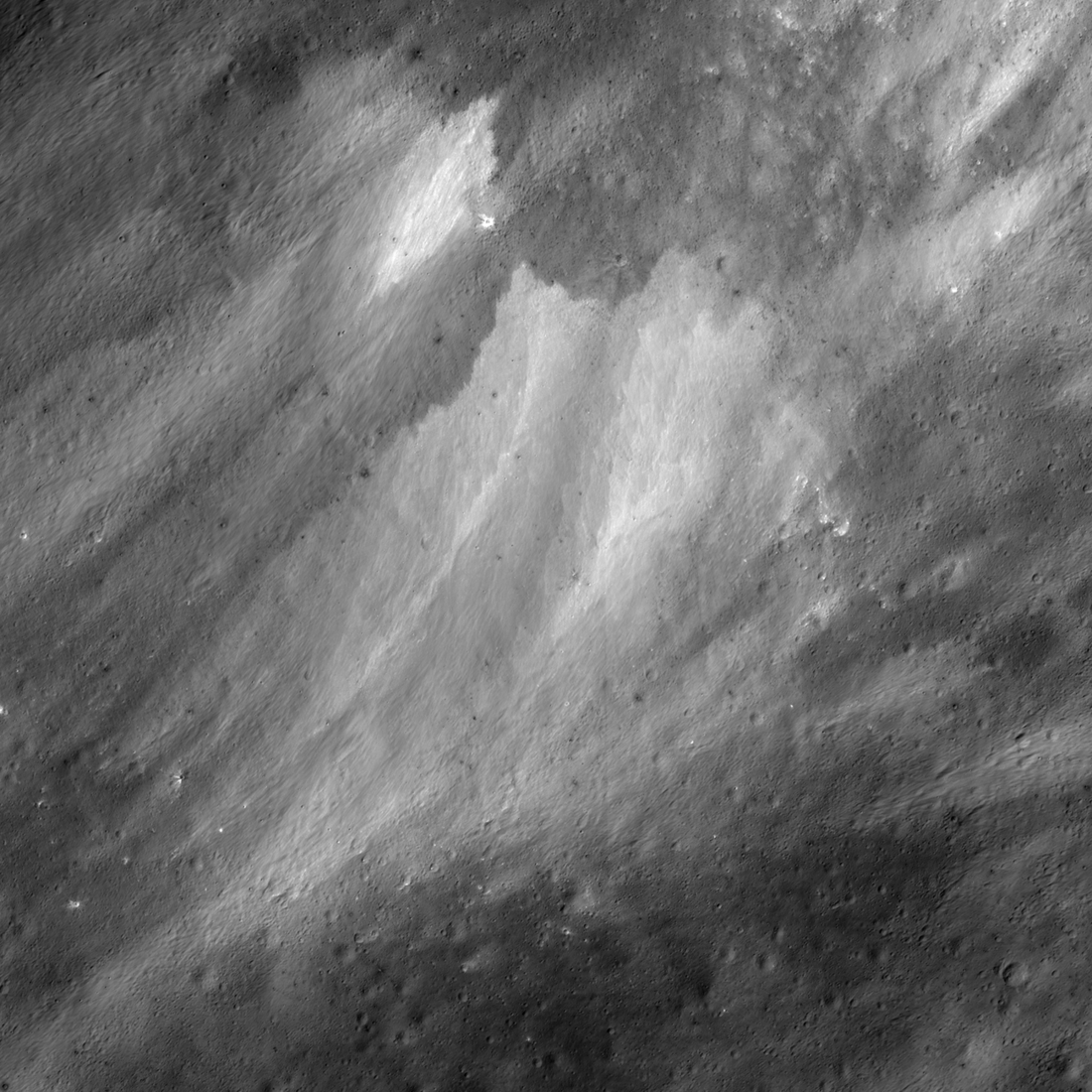
Mesmerizing Patterns
Mesmerizing abstract pattern (17.45°S, 144.75°E) formed as low-angle ejecta from a 2.4-kilometer diameter crater was emplaced from the lower left towards the upper right. The curve indicates the underlying steep slope (20°)....
Published on 28 Jan 2025
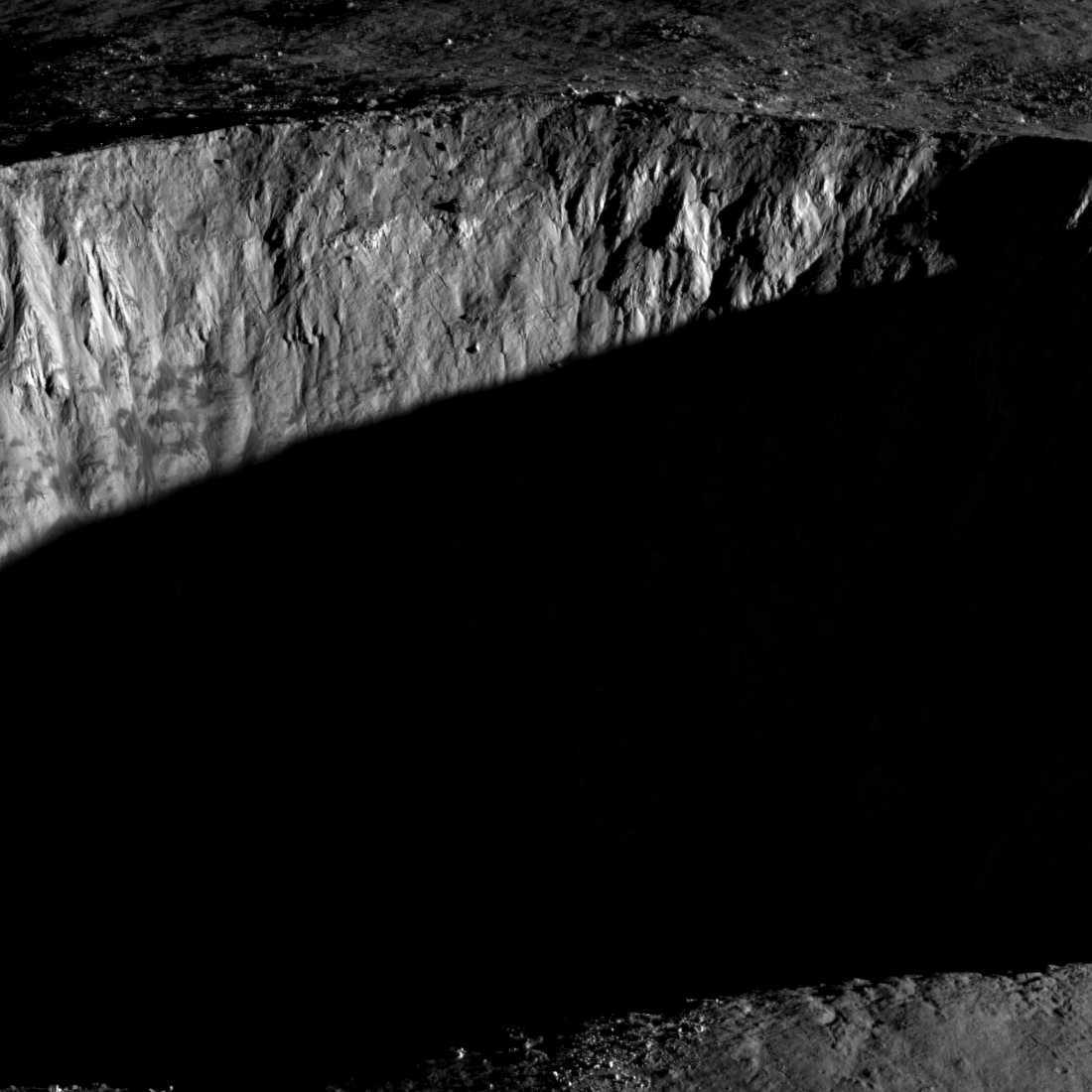
Dramatic Sunrise
Early morning Sun illuminates the steep western wall of an unnamed 10-kilometer diameter crater. North is to the right, image 3.5 kilometers across in the center [NASA/GSFC/Intuitive Machines].
Published on 22 Oct 2024
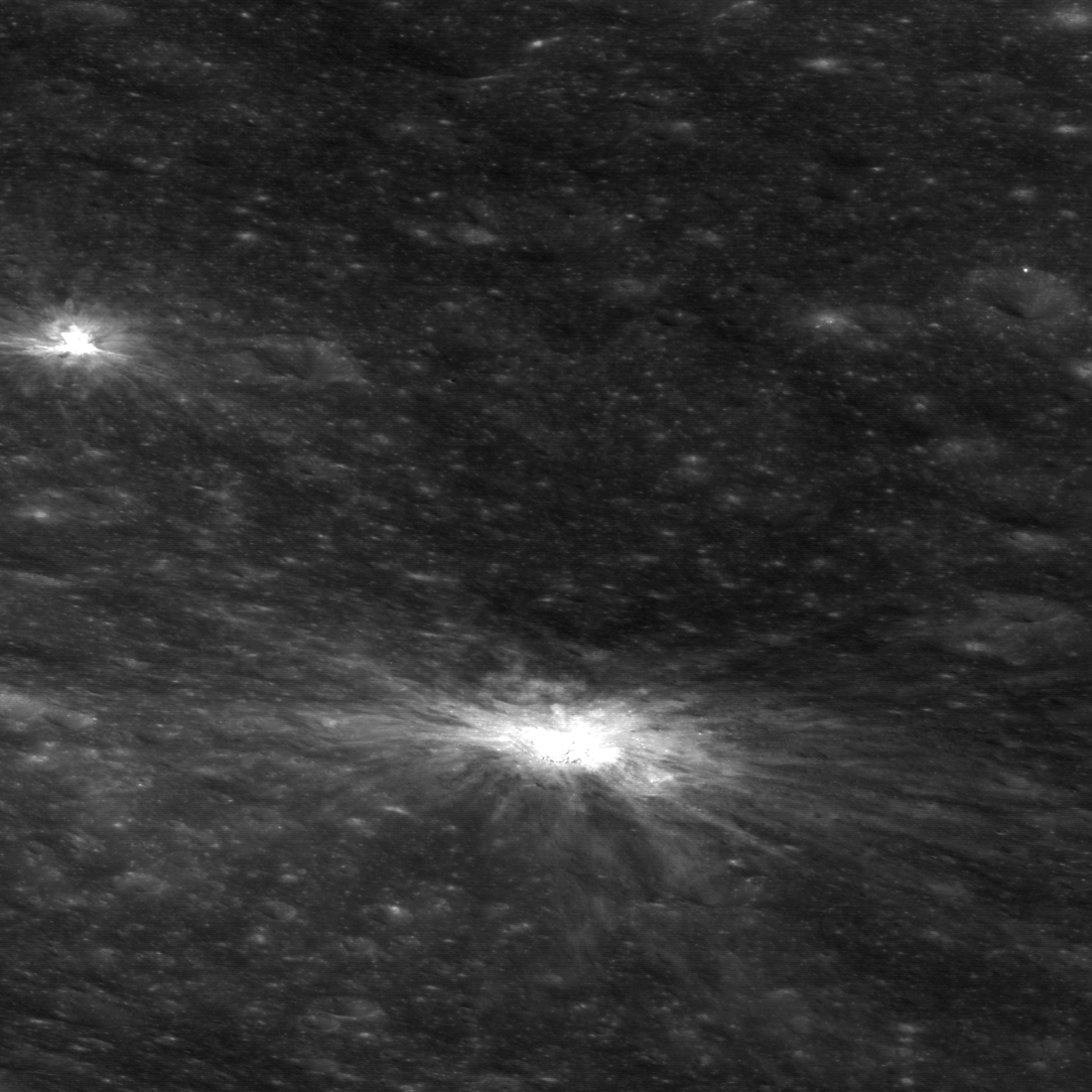
On the Way to Shioli Crater
The upcoming Japan Aerospace Exploration Agency (JAXA) lunar lander will touchdown in the vicinity of Shioli crater (center foreground, 210-meter diameter). The bright interior and rays indicate a very young age for this crater...
Published on 07 Nov 2023
Three Impact Events
Spectacular 4500-meter diameter crater (10.67°S, 225.82°E) formed at the intersection of the rims of Lowell W crater (18-kilometer diameter) and the Orientale basin (750-kilometer diameter). Impact melt and debris spilled from the low...
Published on 20 Feb 2023
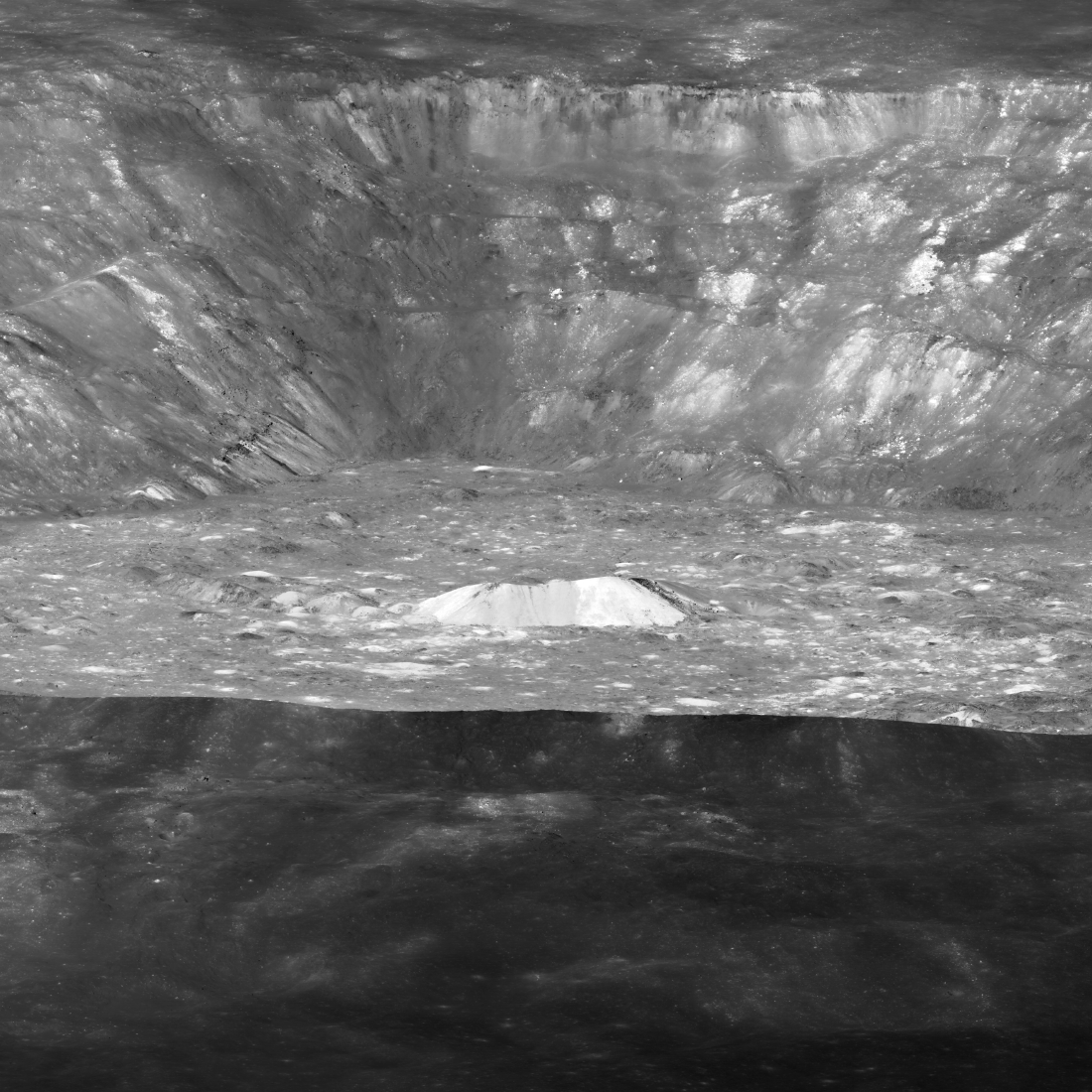
Dramatic Contrast
The dark rim of Aristarchus crater (23.7°N, 312.5°E) dramatically highlights its bright interior and central peak. There are more than 2700 meters of relief from the rim to the crater floor, and the central peak is 3,000 meters wide...
Published on 01 Dec 2022
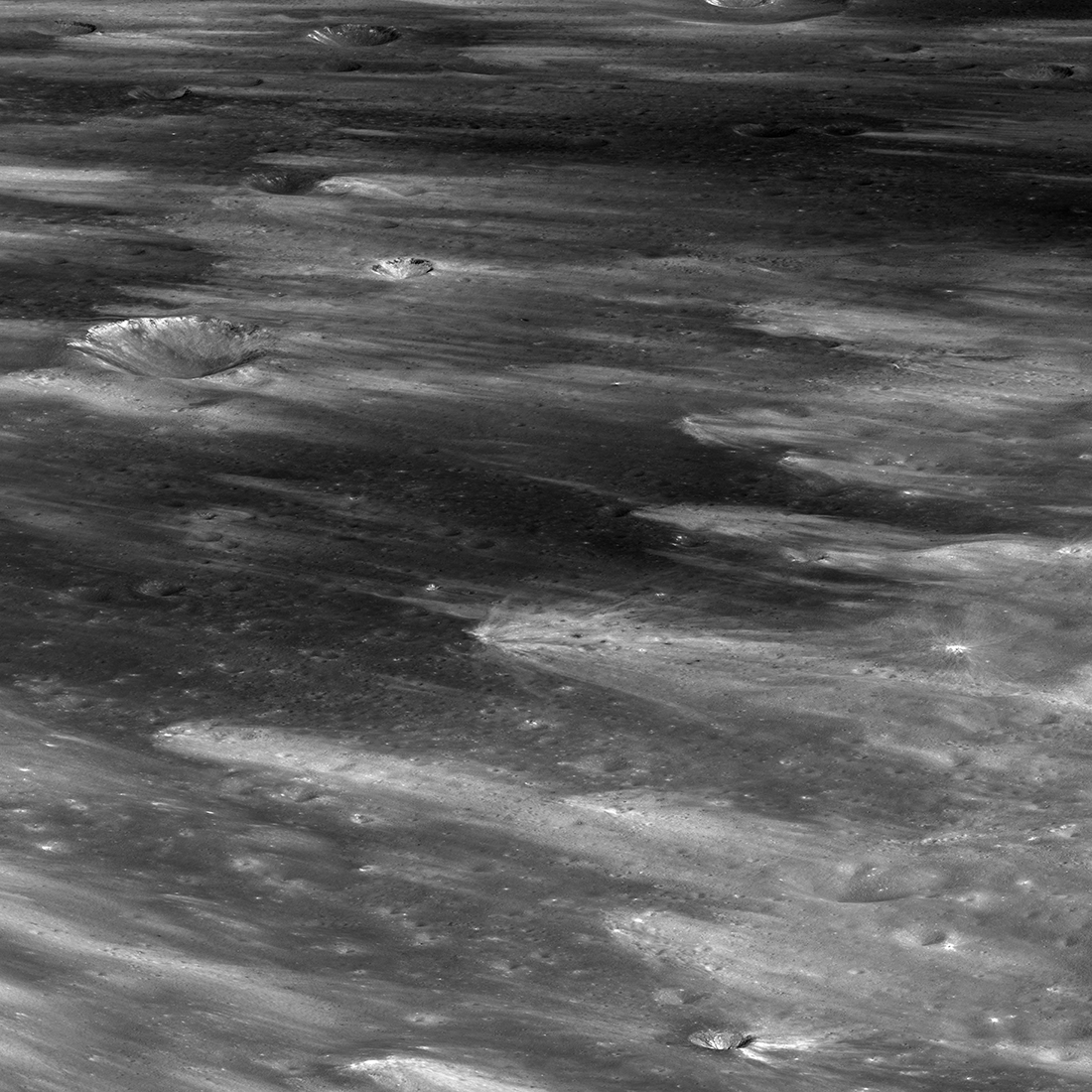
Far Flung Ejecta
Far-flung ejecta (32.7°N, 99.7°E) from the Giordano Bruno impact event raced across a small mare deposit, leaving bright streaks and clues to the details of crater ray formation. This image was acquired looking west-to-east from an...
Published on 31 Oct 2022
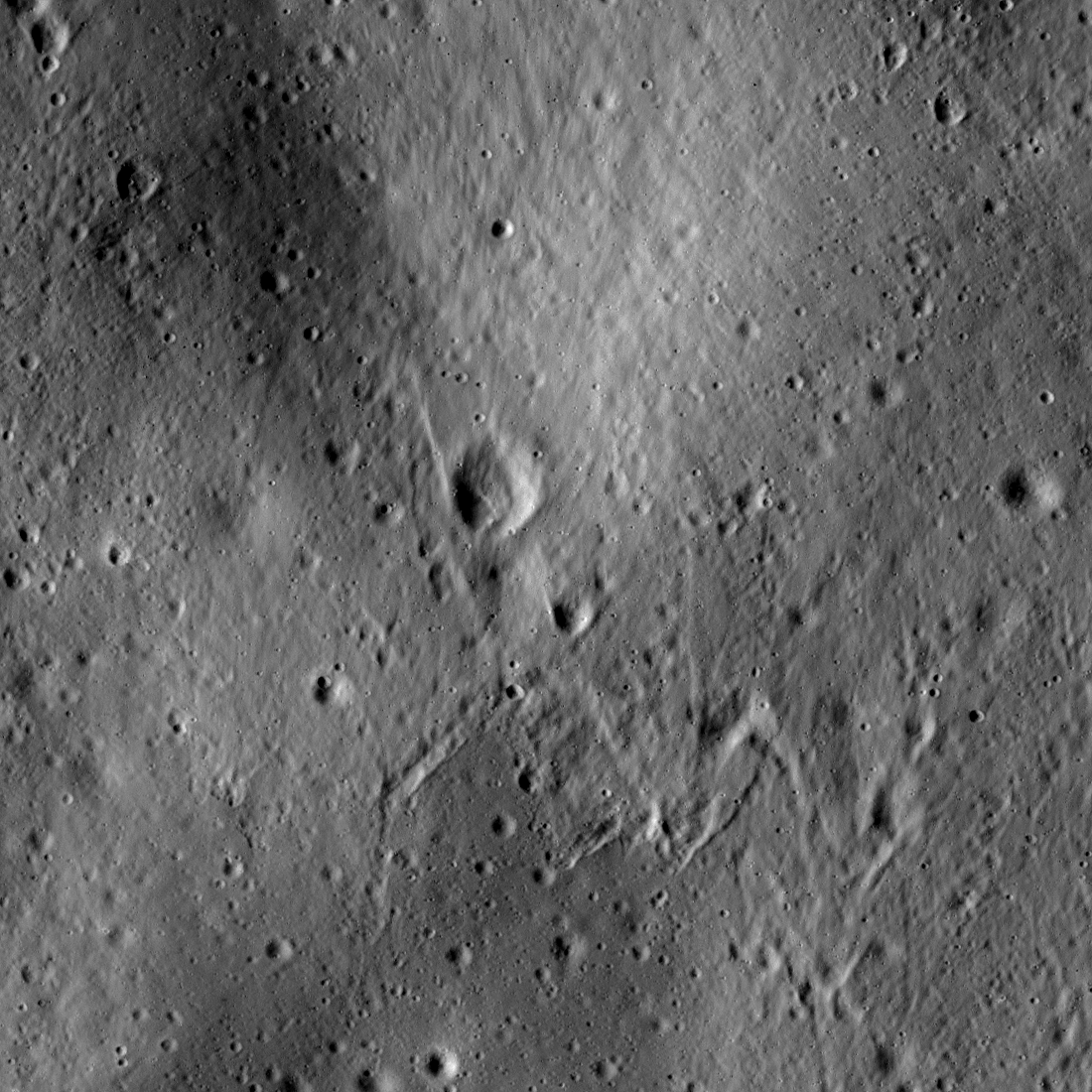
The Ins and Outs of Secondary Craters
Secondary craters and v-shaped ejecta. The largest crater at center is about 90 meters in diameter. LROC NAC image M1143115078RE, located at 4.549° S, 255.721° E [NASA/GSFC/Arizona State University].
Published on 05 May 2022

A “Secondary” View of Copernicus
NAC DTM showing a chain of Copernicus secondaries (15.5°N, 343.4°E). North is pointing right [NASA/GSFC/Arizona State University].
Published on 04 Feb 2022
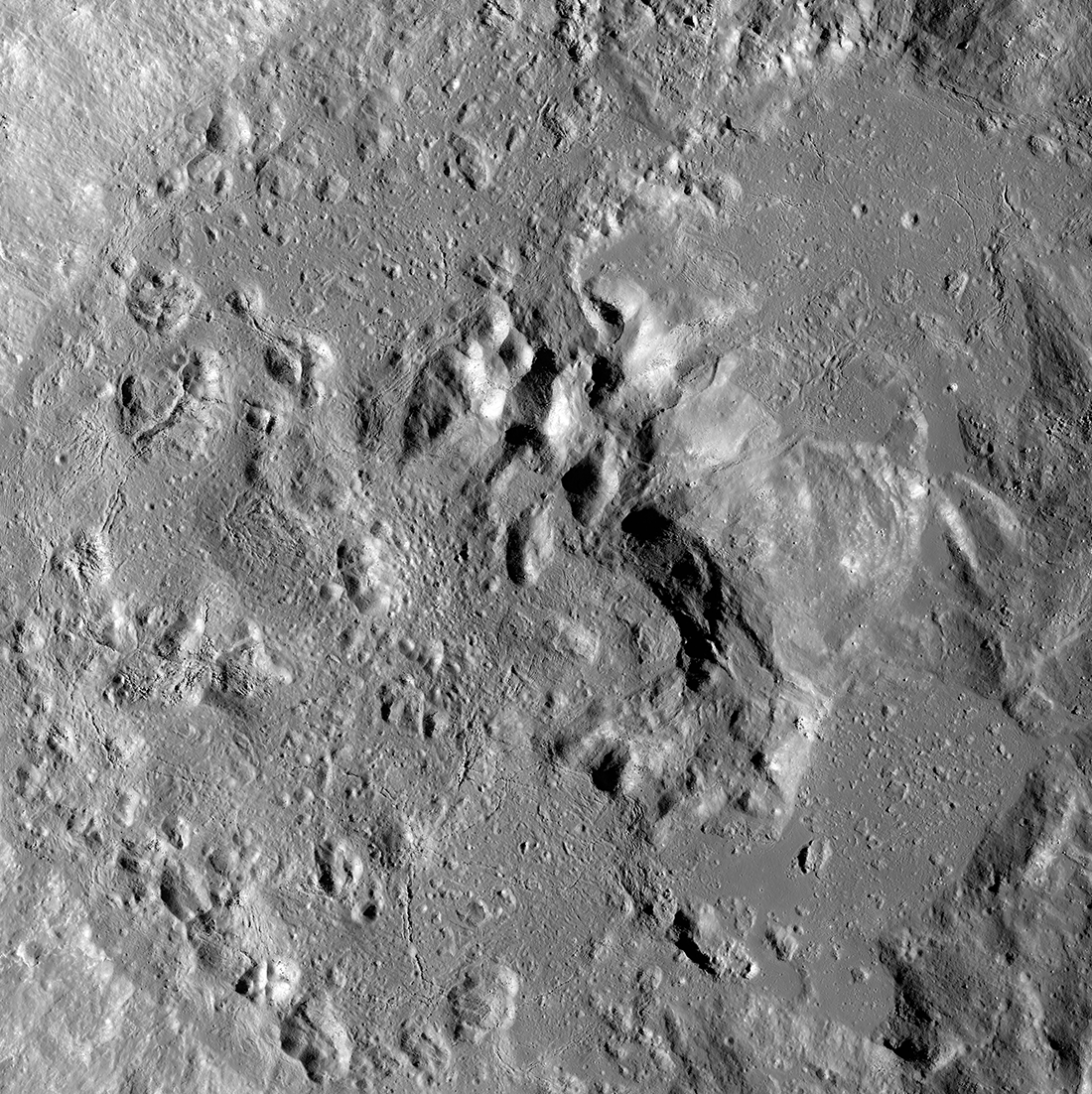
Farside Impact: Crookes Crater
During the formation of Crookes crater (48 km diameter, 10.39° S, 194.92° E), its central peak rebounded after the extreme compression from the high-speed impactor, and a small sea of impact melt eventually solidified on the crater...
Published on 27 Oct 2020
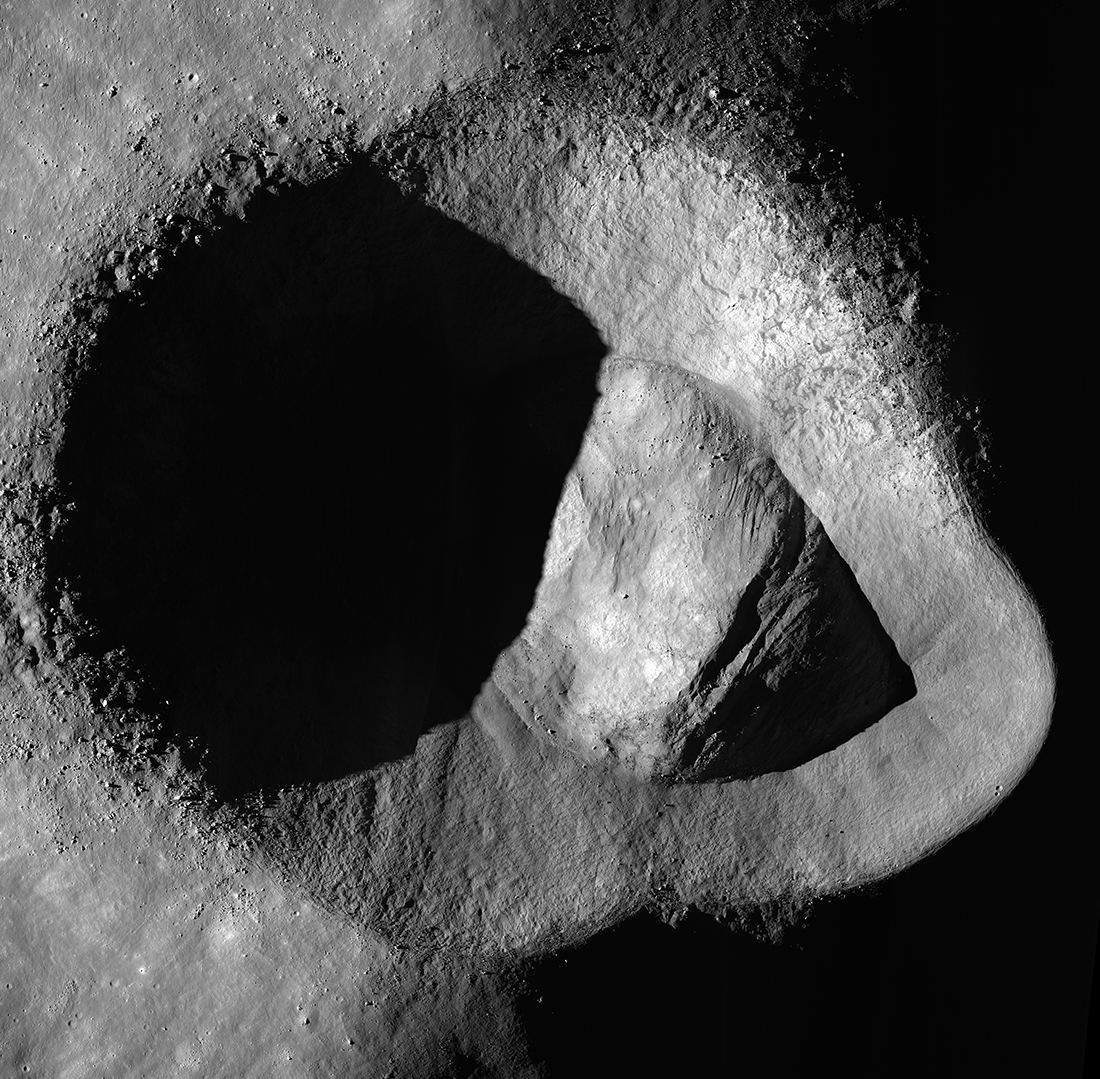
The Highs and Lows of Ryder Crater
Ryder Crater (13 x 17 km across) controlled Feature Mosaic; located at 43.8° S, 143.2° E, north is up, LROC NAC images M1172098182, M1172105288, and M1172112395 [NASA/GSFC/Arizona State University].
Published on 19 Oct 2020
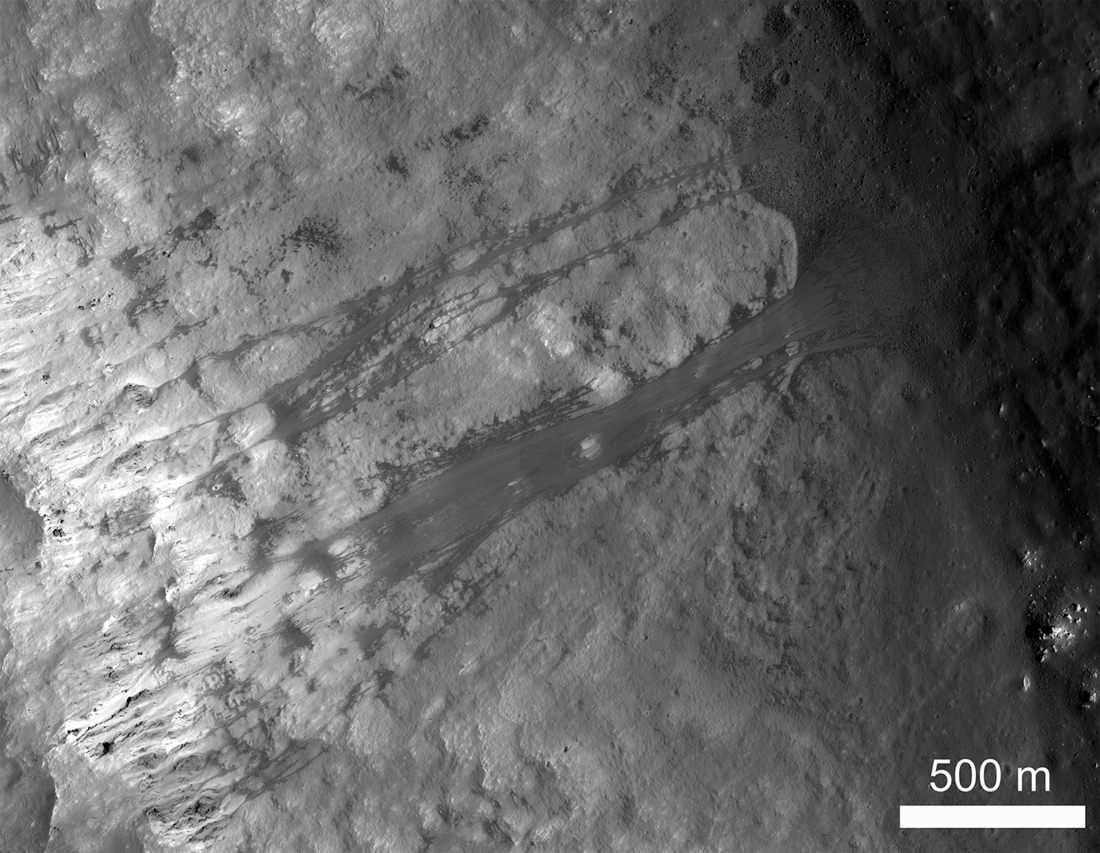
Kepler Crater Landslide
Mass movement of rocky debris down the inner crater wall and onto the floor of Kepler crater. Image width 3 kilometers, north is up, M114206456LR [NASA/GSFC/Arizona State University].
Published on 09 Oct 2020
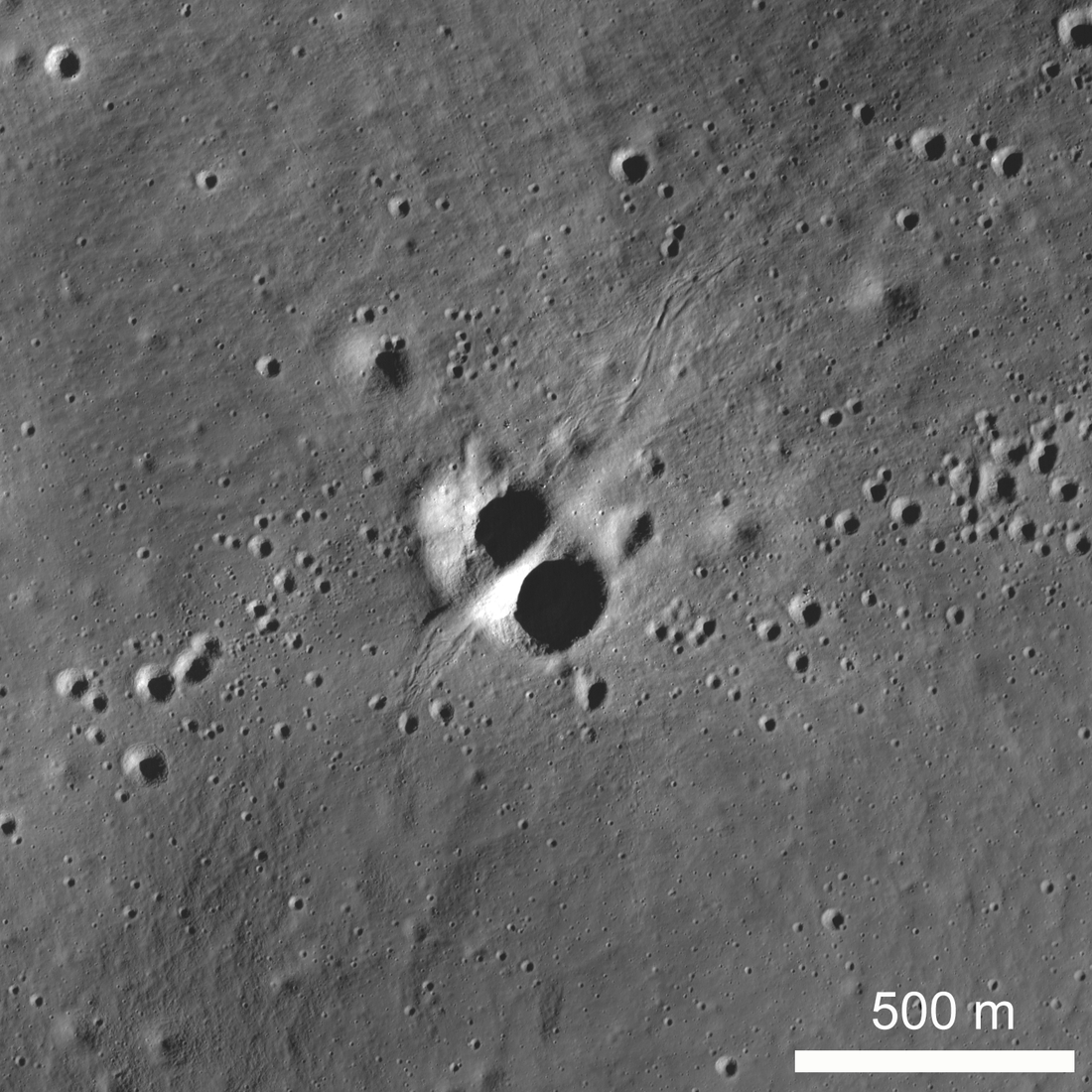
Double Whammy
Twin craters formed by the simultaneous impact of two projectiles. NAC image M1229857067L,R [NASA/GSFC/Arizona State University].
Published on 18 Aug 2020
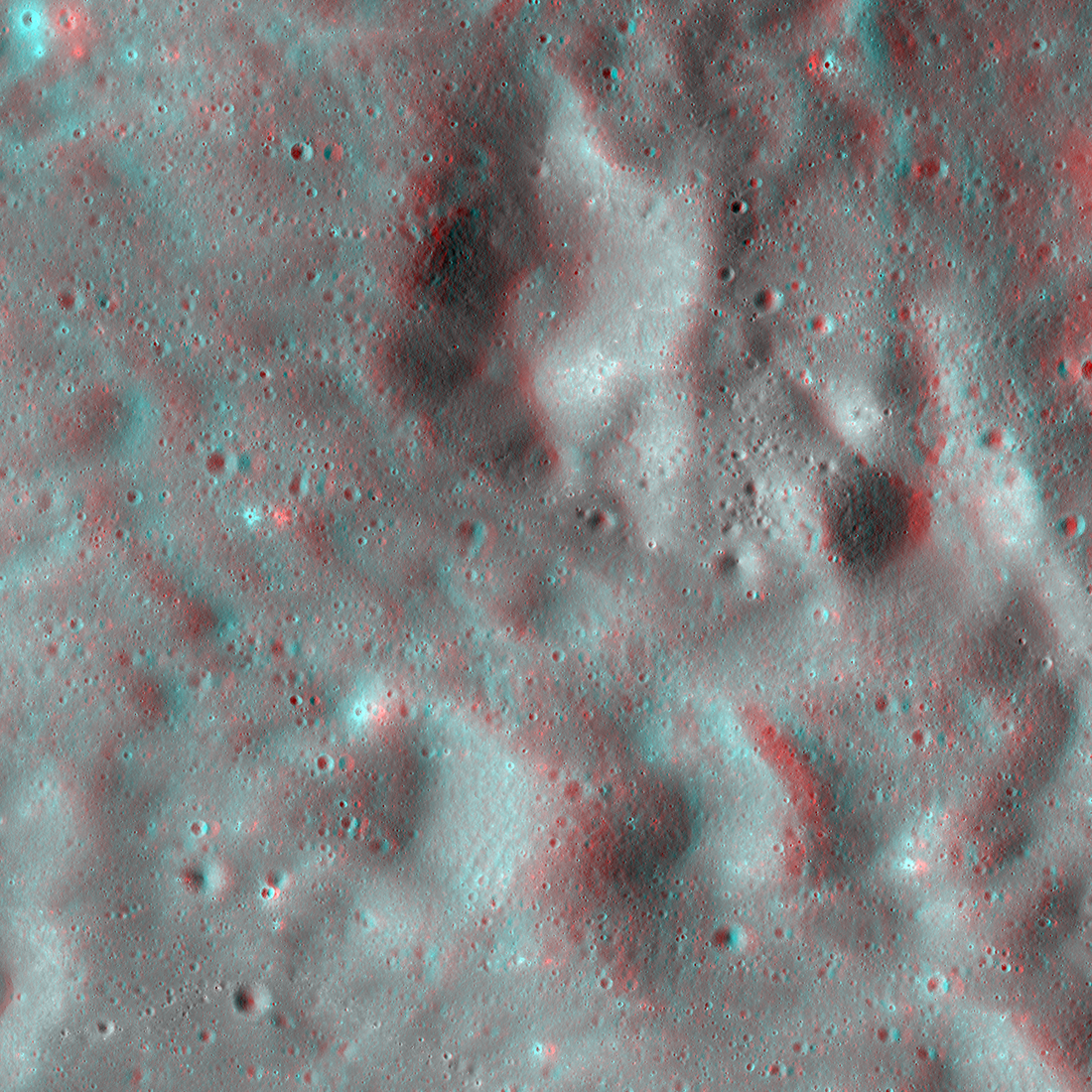
A Rain of Rock
A rain of rock carved these craters west of Vavilov crater. The ground here, which is elevated relative to the surrounding terrain, intersected with rock and other ejected debris excavated during the formation of Vavilov crater. The...
Published on 28 May 2020
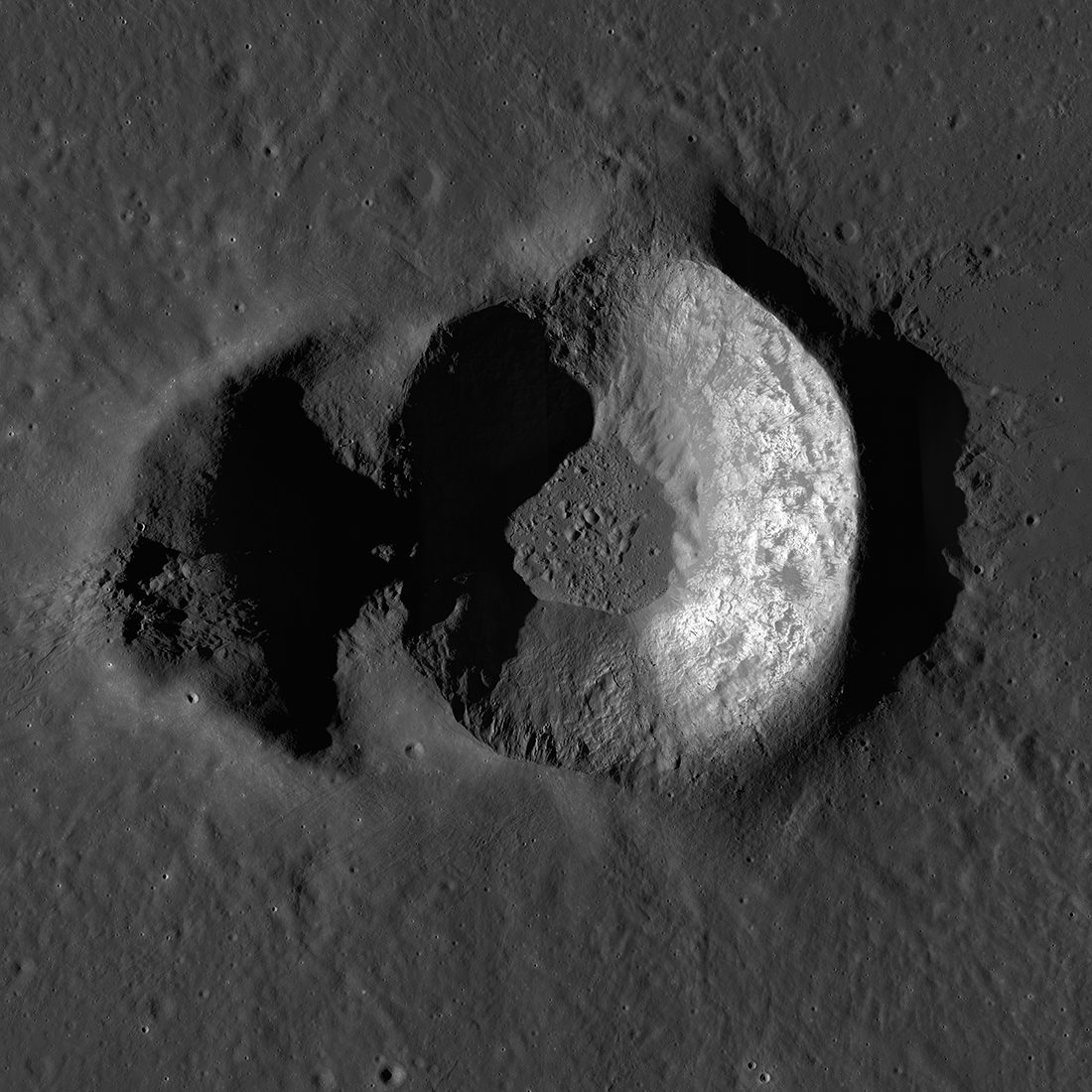
Double Trouble: Messier A
Messier A crater (2.039°S, 46.887°E, 10.6 km across from north to south) feature mosaic, created from NAC images M1188059614LR, M1188045553LR, and M1188052583LR [NASA/GSFC/Arizona State University].
Published on 01 Apr 2020
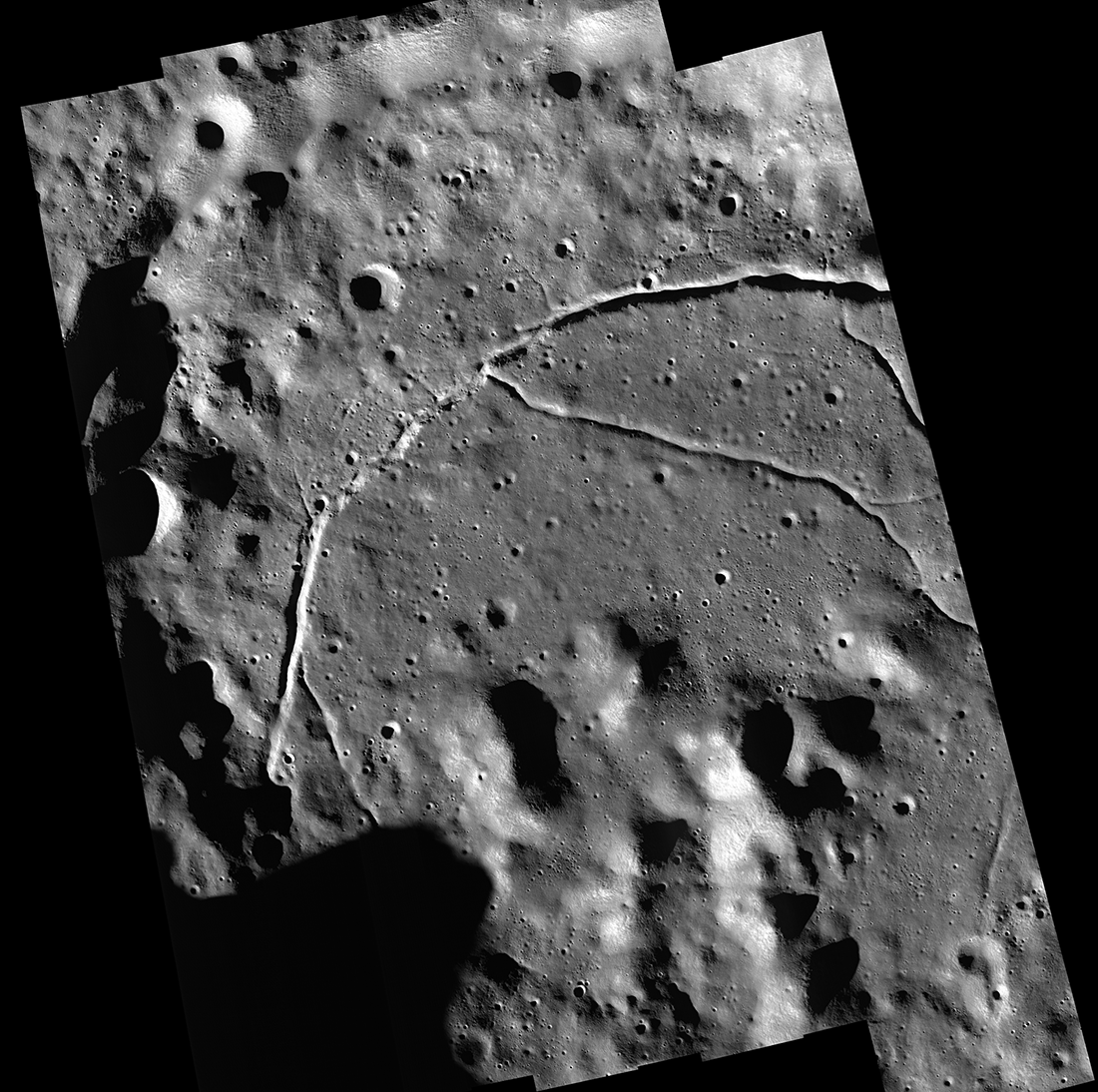
Feature Mosaics: Behind the Seams
A seamless mosaic of a portion of Karpinsky crater (91 km diameter, 72.61° N, 166.80°E) seamless mosaic. Scene is 55 km across, NAC images M1309496597L/R, M1309503618L/R, M1309510644L/R, M1309517669L/R, and M1309524696L/R...
Published on 16 Mar 2020
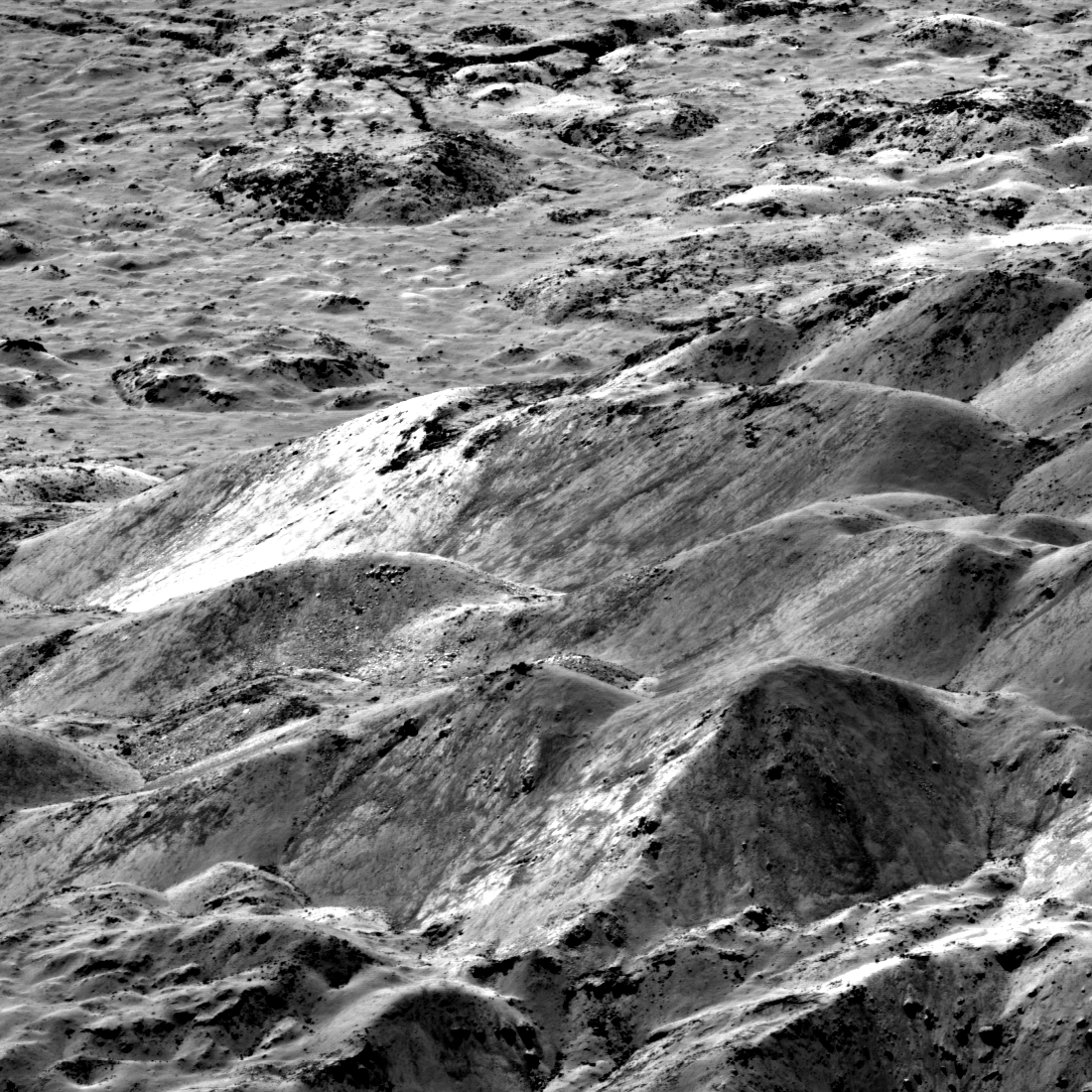
What Lies Beneath
Spectacular contrasts of gray scale in the central peak of Jackson crater signal variations in both composition and maturity (degree of freshness of the surface). Image is 3100 meters wide, north is to the right, M1265842750LR...
Published on 19 Jul 2019
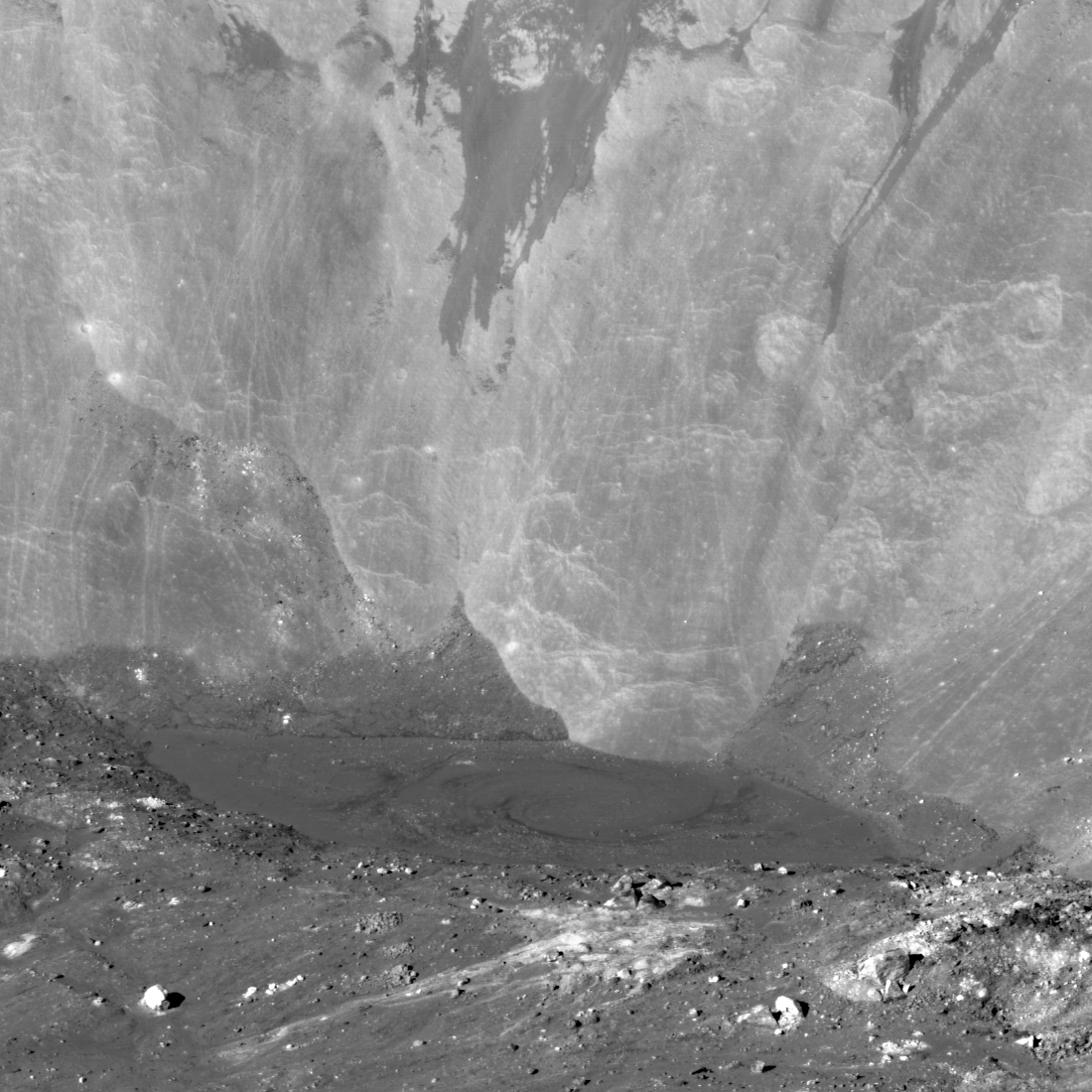
How Spectacular is this View?!?!
Oblique view of what might be the most spectacular young crater on the Moon - Giordano Bruno. The imposing cliff in the background rises 3000 m above the melt pool seen in the middle ground (top of cliff not seen here). Scene is about 3...
Published on 15 Jul 2019
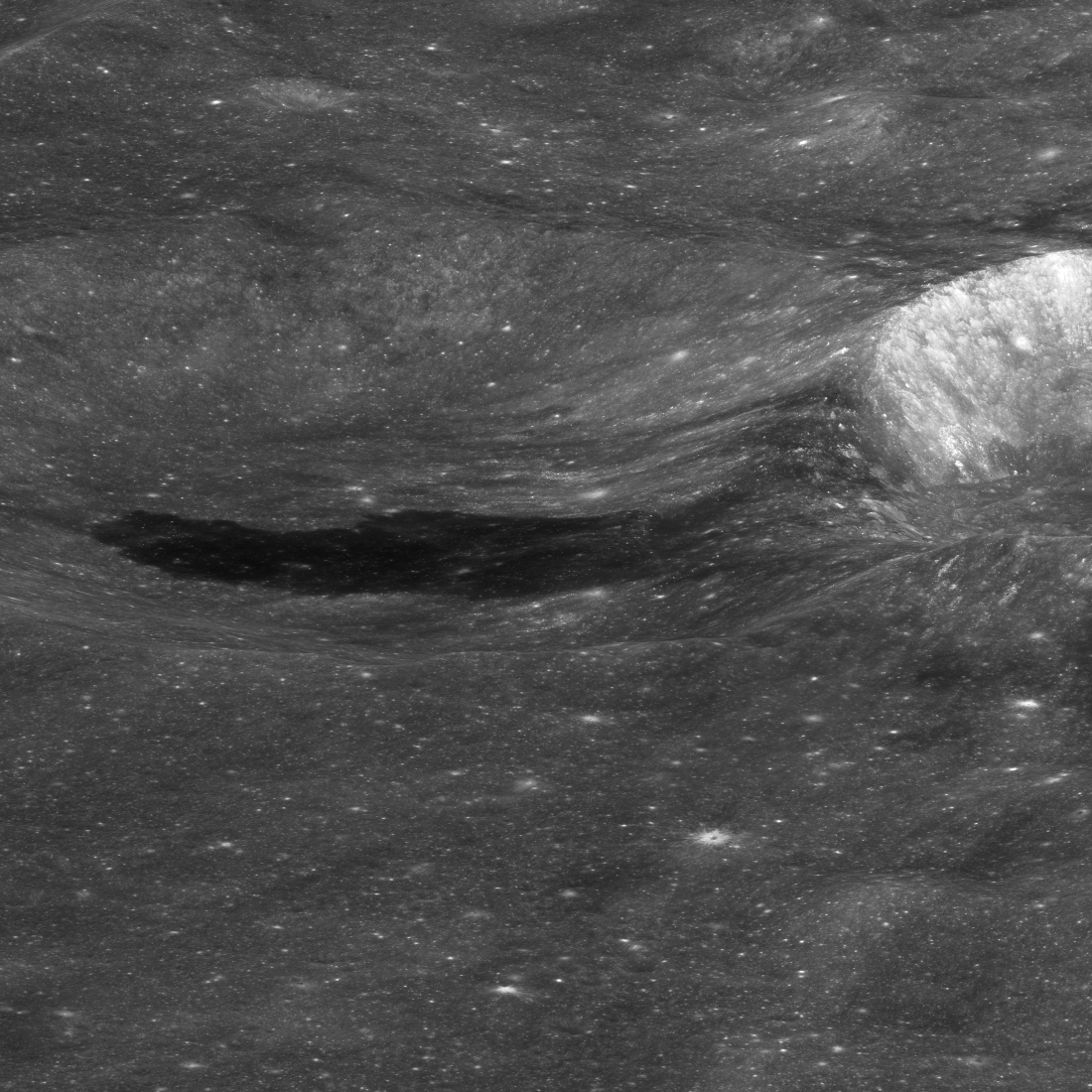
Korolev X and Z
Sharing a melt flow: visible in the right part of this oblique image is the bright wall of Korolev Z crater, the source of a 12.5-kilometer-long dark melt flow that drapes across the ancient floor of the degraded crater Korolev X. South...
Published on 14 Dec 2018
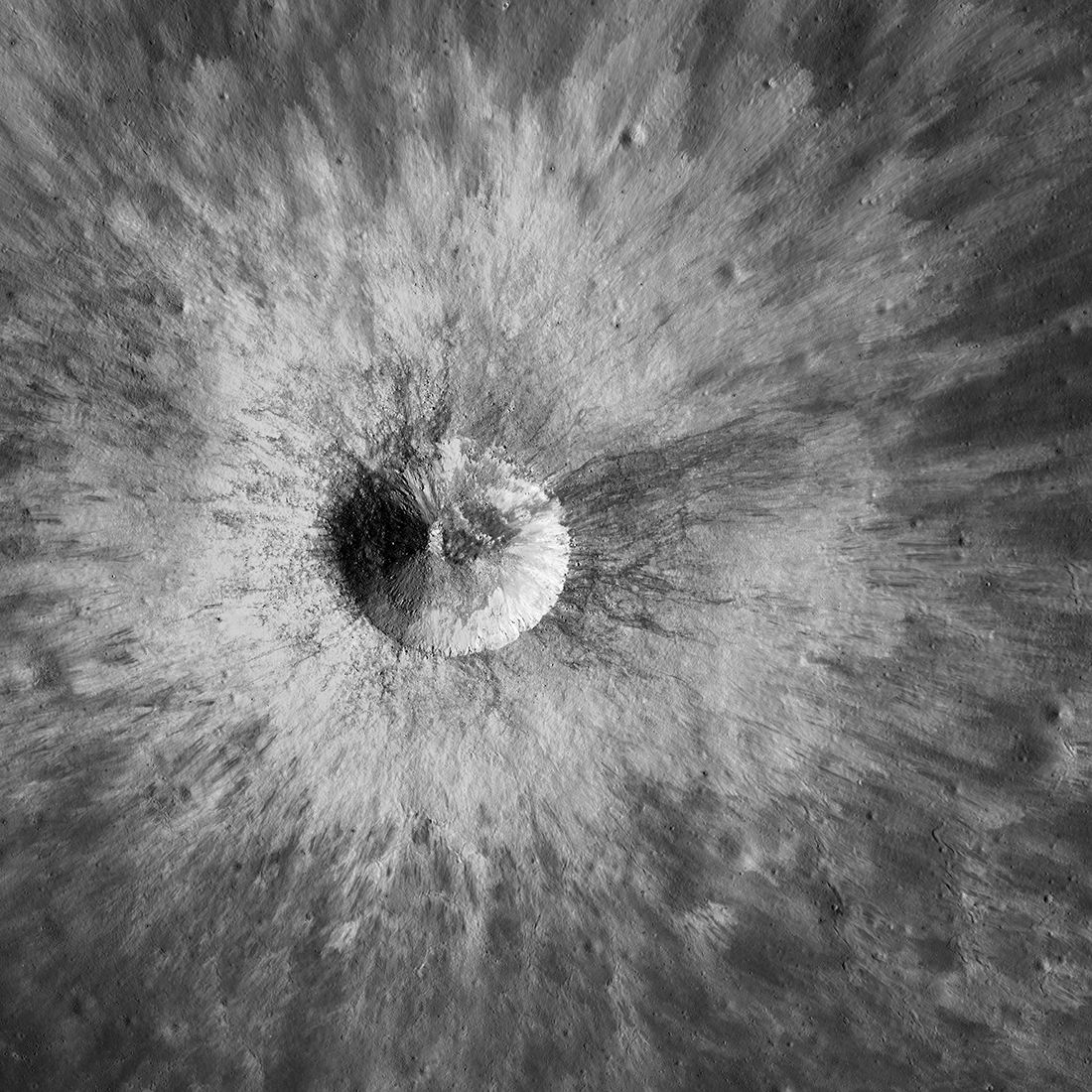
Lunar Beauty
The Lunar Reconnaissance Orbiter Camera imaged this bright young ray crater (3.13˚N, 281.07˚E) on 3 November 2018 — just three weeks ago. The Sun shone from the west (left, 48˚ incidence angle). This image covers an area 8.1 kilometers...
Published on 21 Nov 2018
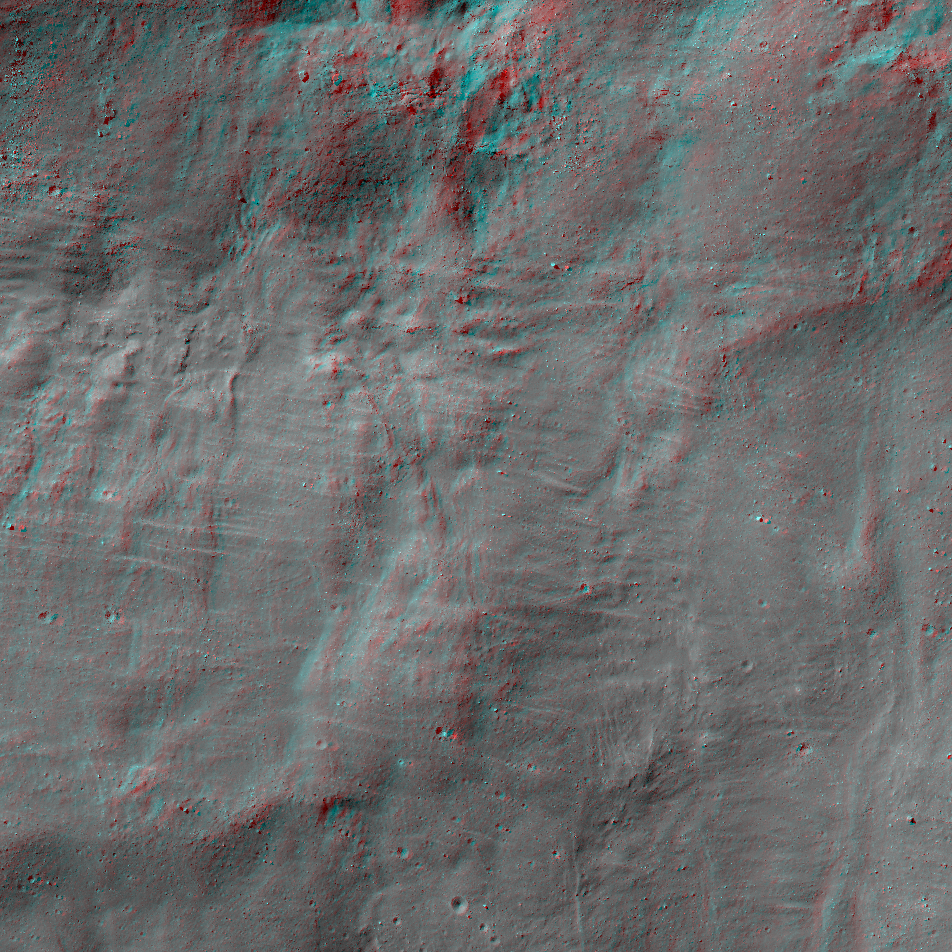
The South Side of Tycho Crater
Get out your red/blue anaglyph glasses for a three-dimensional treat! This extreme closeup of the south side of 86-kilometer-diameter Tycho Crater shows melt flows and pools, small craters, sagging slopes that look like ripples,...
Published on 08 Oct 2018